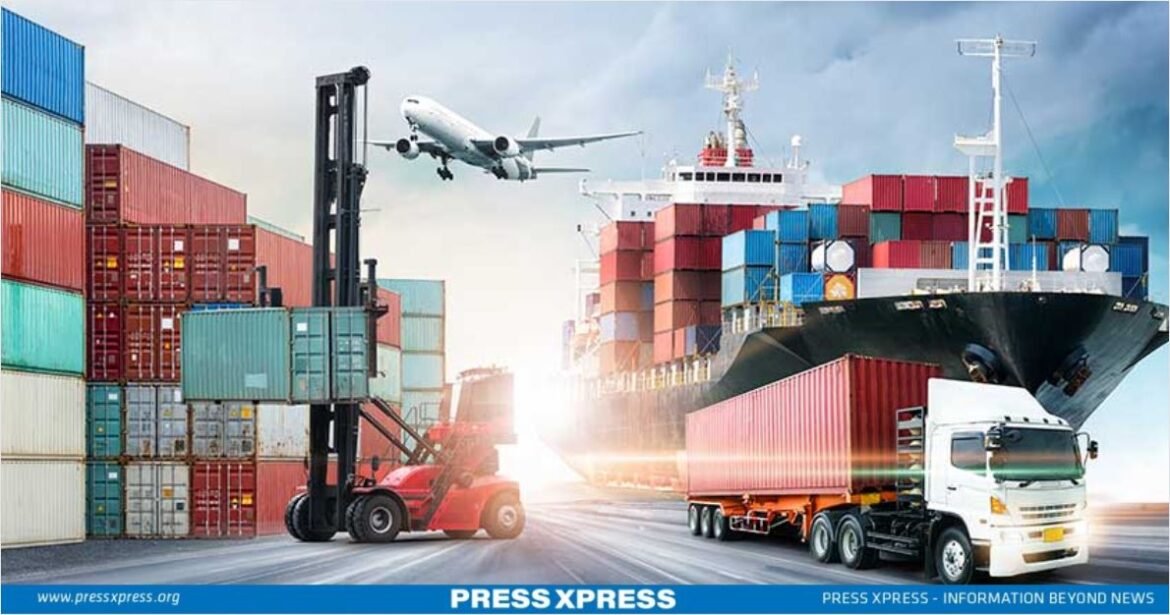This time the government’s vision extended beyond mere fiscal incentives, embracing a holistic approach to nurture the export ecosystem. Amidst the gravity of economic deliberations, the Cabinet Committee on Economic Affairs (CCEA) convened for its 8th session of the year, and the blueprint of the Export Policy 2024-2027 received the greenlight, setting its sights on a monumental $110 billion export target by FY27. The Finance Minister Abul Hassan Mahmood Ali has approved it. A proposed export development fund under the Export Promotion Bureau will offer venture capital to exporters on favorable terms, supporting innovation and diversification.
The Cabinet Secretary unveiled the new policy, a strategic blueprint forged to navigate challenges like LDC graduation, COVID-19, and the Russia-Ukraine conflict. At its heart lies a commitment to empower small and medium-sized entrepreneurs. Inclusivity threads through the policy, amplifying the voices of women entrepreneurs in export ventures.
You can also read: Population Policy Revolution: Transforming People into Productive Resources
Moreover, the policy unfurled a canvas adorned with the hues of sustainability, championing the cause of an environment-friendly and circular economy. In this paradigm, the artisans of innovation found sanctuary, with tailored provisions to fortify their endeavors, from the verdant fields of agriculture to the intricate tapestry of pharmaceuticals.
Within the sanctum of the Cabinet Committee on Economic Affairs, another proposal, this time from the Ministry of Commerce, found favor. It sought to extend the lifeline of essential item procurement by the state-run Trading Corporation of Bangladesh, whether sourced through imports or locally, by an additional year until June 30, 2025. This extension, a salve for the imminent expiration slated for May 26, 2024, would ensure continuity in providing subsidized essential items to approximately 10 million low-income families, their welfare safeguarded by the benevolent hand of the government.

Incentives Galore to Elevate Global Trade Status
The government also plans to provide consultancy, technical aid, warehousing, overseas sales centers, skills development for international marketing, and low-cost bank loans for green energy initiatives. This multifaceted support aims to propel Bangladesh towards the pinnacle of global trade, driven by visionary leadership and unwavering resolve.
The government has unveiled a suite of incentives aimed at propelling Bangladesh to the pinnacle of global trade. Key measures include 5-10% rebates on electricity, water, and gas bills for industries, and potential cost reductions for diesel and furnace oil.
Exporters will benefit from waivers on licensing fees and exemptions on duties for capital machinery and spare parts. Additionally, the service sector will receive incentives of 2 to 2.5 percent of export receipts. Beyond fiscal measures, the Bangladesh Trade and Tariff Commission will establish a services sector department to address challenges and explore new markets, guiding Bangladesh towards global commerce success.
Government Support Measures:
- Consultancy, technical aid, warehousing, overseas sales centers.
- Skills development for international marketing.
- Low-cost bank loans for green energy initiatives.
Incentives for Industries:
- 5-10% rebates on electricity, water, and gas bills.
- Potential cost reductions for diesel and furnace oil.
Abroad, Bangladeshi missions will fervently promote the nation, transforming virtual markets into commerce strongholds with financial and technological support. Key sectors like computer services, consultancy, and nursing are prioritized for their global potential. Amidst this ambition, the policy is shaped by the realities of the pandemic, the Russia-Ukraine conflict, and the fourth industrial revolution, ensuring resilience and adaptability.
Vegetables, handicrafts, spinning, dyeing, and medical equipment all find their place in the government’s strategic plan. As merchandise export earnings rise, the nation stands on the brink of greatness. Each fiscal year brings exponential growth, driving towards a $72 billion export target—a testament to national ambition and commitment to prosperity.
Exporters’ Benefits:
- Waivers on licensing fees.
- Exemptions on duties for capital machinery and spare parts.
- Incentives of 2 to 2.5 percent of export receipts for the service sector.
Challenges Ahead for Bangladesh’s Export Targets
However, this pursuit is not without challenges, as the path to greatness is fraught with obstacles.
The tapestry of fiscal targets unfolds with precision, each thread woven into the fabric of ambition. Merchandise shipments, the lifeblood of export prowess, emerge as the linchpin, with a target of $62 billion, a quantum leap from the preceding fiscal year’s $55.55 billion. Meanwhile, the services sector, a burgeoning frontier of opportunity, embarks on its own odyssey, with a target set at $10 billion, a testament to its growing significance in the national economic tableau.
Experts from various sector cast doubt on the feasibility of the ambitious export targets, citing power shortages, bureaucratic hurdles, and customs issues. Despite these challenges, the draft policy stands as a beacon of resilience, promoting a competitive trade environment through rationalized taxes and a flexible exchange rate to attract foreign investment into Bangladesh’s manufacturing sector.
Venture capital, the lifeblood of innovation, finds fertile ground in the agricultural landscape, nurturing farms towards greater productivity and export potential. But it is in the aftermath of LDC graduation in 2026 that the true test of resilience lies, as the nation navigates the loss of existing duty-free benefits with steely resolve.
Fiscal Targets:
- Merchandise shipments target: $62 billion
- Services sector target: $10 billion,
Despite the ambitious $80 billion export earnings target, officials remain cautious, aware of the global challenges posed by the pandemic and conflicts. The path ahead, though ambitious, is tempered with pragmatism.
Nonetheless, the nation’s export prowess remains undeniable. With $63 billion garnered in fiscal 2022-23, and a target of $72 billion for the current financial year, Bangladesh’s resilience shines through the gloom of uncertainty.
Balancing Optimism with Realism
In the industry, optimism meets skepticism. Ahsanul Haque Chowdhury, ex-president of the Bangladesh Shipping Agents Association, praises the government’s initiative, but concerns about gas shortages and rising prices persist. Mohammad Hatem sees the $110 billion export target as challenging due to these issues.
The crux of the matter lies in the realm of ease and cost of doing business. If bureaucracy is streamlined and expenses reduced, significant progress is possible. However, rising costs, higher electricity tariffs, and port regulations pose major obstacles.
Despite these challenges, the new export policy draft outlines a path to economic rejuvenation. It advocates reducing protectionism, rationalizing taxes, and attracting foreign investment. The goal is to enhance trade capacity, form alliances with larger economies, and boost industry productivity.
As Bangladesh approaches graduation from LDC status, challenges and opportunities abound. Loss of duty-free privileges and restricted access to international financial institutions signal a shift towards economic pragmatism. The rise of advanced technologies diminishes the advantage of low-skilled labor, highlighting the impact of the fourth industrial revolution.
In response, adaptation becomes imperative. Embracing circular production, empowering women entrepreneurs, and fostering agricultural innovation are crucial. Through resilience in adversity, Bangladesh can forge a path to greatness.


